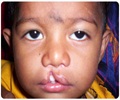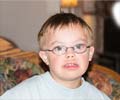Causes
An exact cause cannot be pinpointed for this condition although it has been suggested to occur as a result of Autosomal Recessive Inheritance. In a variant form of the condition, several heart complications can also co-exist. When only a single defect is predominant, it is referred to as non-specific anomalad or anamoly, but it is called as Pierre-Robin syndrome when all the three malformations ( very small lower jaw, cleft palate and retroglossoptosis) are present.
There are several theories that seek to explain why the condition occurs and among them three theories are worth mentioning:
Mechanical Theory: This theory decribes how the tongue remains in a high position in the mouth due to the failure of the formation of the lower jaw. The formation of the jaw takes place approximately between 7th and 11th week of the fetal life. Because the mandible or the lower jaw fails to grow properly, the tongue remains high in the mouth and it blocks the upper mouth plates from fusing together. This leads to the formation of what is medically called cleft palate. The mechanical theory is the most accepted one by researchers.
Neurological maturation theory: This theory postulates that there is a delay in maturity of the nerves in the tongue muscles, the palate and the pharynx.
The rhombencephalic dysneurulation theory: This complicated sounding theory refers to a disruption in the 'rhombencephalus region' of the brain as being the main cause for the syndrome, but this is not widely accepted.










